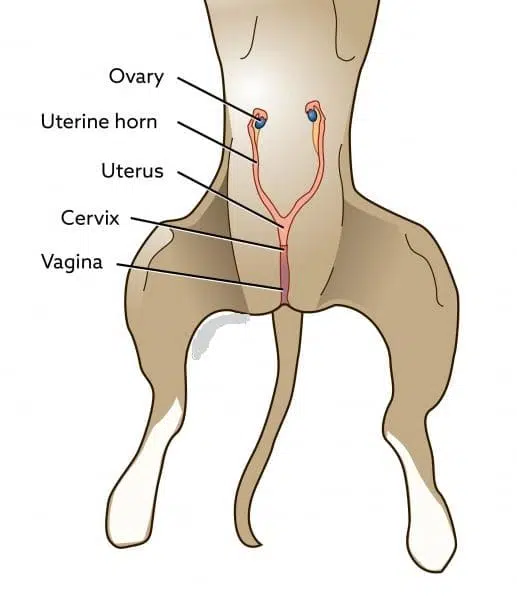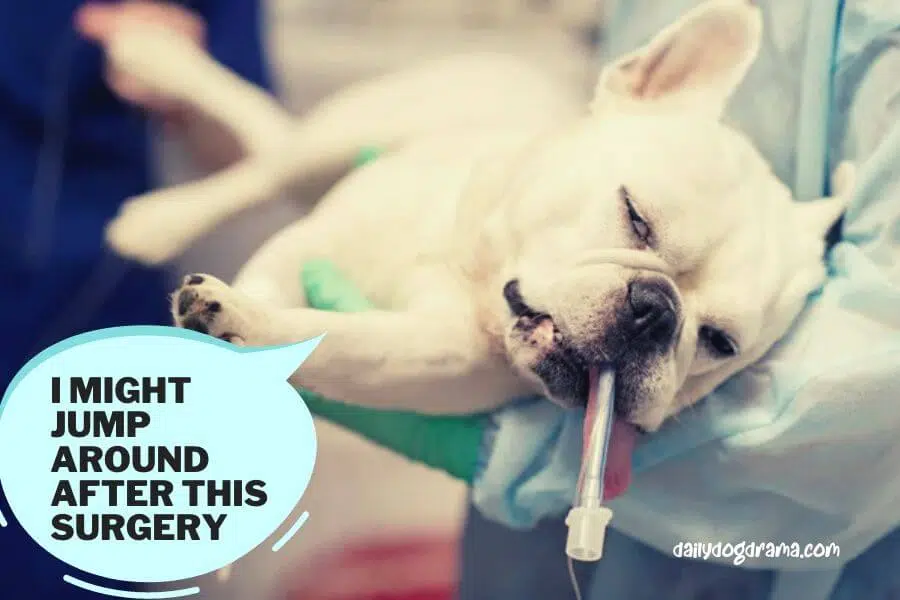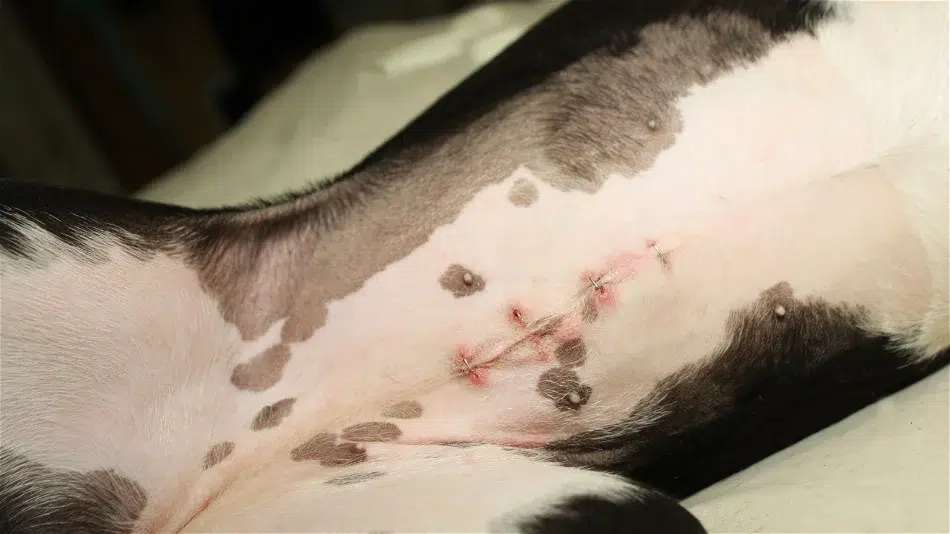What Triggers Jumps in Spayed Dogs? 5 Must-Knows!
It’s not uncommon for dogs to jump after being spayed, as this behavior can stem from various factors. Your dog might be reacting to discomfort or pain from the surgical site, or simply responding to the stress of the procedure. Additionally, if your dog was used to being active and jumping before the surgery, those behaviors might continue due to habit. It’s important to monitor their activity and ensure they don’t exert themselves too much during the recovery period. Consulting with your veterinarian can provide guidance on how to manage their post-operative behavior effectively.
My dog jumped after being spayed
Understanding the importance of post-spay care is crucial. Spaying, a standard and routine operation for female dogs, often leads to a challenging recovery phase.
Veterinarians stress the need to keep dogs calm after surgery, emphasizing that it’s not just about healing, but also about preventing complications.
Despite following my vet’s instructions, my dog’s natural instinct to jump on the bed and run free posed a real risk to her recovery. This highlights why restricting such activities post-spay is vital for their well-being.
This article, informed by veterinarian Dr. Ivana Crnec, a licensed graduate of the University Sv. Kliment Ohridski’s Faculty of Veterinary Medicine in Bitola, Republic of Macedonia, explores the risks associated with spay surgery and the importance of watching for complications in your recovering pet.
Should you be concerned by such activities? Read on to get all the answers you need.
What Is Spay Surgery in Dogs?
Spay surgery, a critical surgical procedure for female dogs, involves removing reproductive organs to stop reproduction and heat cycles.
It encompasses two procedures: ovariohysterectomy, where both the uterus and ovaries are removed, and ovariectomy, removing only the ovaries.
Although the effect on the dog’s cycle is the same, ovariohysterectomy is often preferred as it eliminates risks of diseases like pyometra and uterine tumors.
Understanding this helps explain why my dog’s post-spay jump, though alarming, was a part of her journey to a healthier life without the burden of such ailments.

Why Is Jumping After a Spay Surgery a Problem?
After my dog was spayed, I faced the challenge of managing her recovery, especially when she began to exhibit ‘puppy zoomies’ and a desire to jump around.
This behavior was concerning because the spay surgery involved meticulous stitching of various tissue layers, from abdominal muscles to skin, often closed with staples or glue.
These sutures, while robust, necessitated careful monitoring to ensure proper healing and to limit physical activity that could disrupt the recovery process.
Navigating her post-spay period was a delicate balance between allowing some freedom and ensuring she didn’t engage in activities like jumping, which could risk her well-being.
Additionally, her reluctance to drink water after the surgery added another layer of concern, highlighting the need for constant vigilance and adherence to the veterinarian’s guidelines for a safe and smooth recovery.
What Should You Do If Your Dog Jumps Shortly After Being Spayed?
When my dog, just 7 days after her spay surgery, started jumping around, it was a moment of both awe and concern. The key step was to check her stitches carefully for any signs of tearing or loosening.
Despite the urge to panic, I remembered it’s crucial to stay calm and assess the situation: if the stitches looked intact and there were no signs of swelling, discharge, or redness, it indicated no immediate threat of infection.
However, the responsibility didn’t end there. Monitoring her closely for any discomfort or unusual behavior became my priority. It was a constant reminder that recovery from spaying, a generally safe and routine surgery, could still present challenges.
My vet’s advice to gradually reintroduce activity and to watch for any problematic signs was invaluable for a smooth recovery, reinforcing the notion that being proactive and attentive is always smarter post-surgery.
How Can I Prevent My Dog From Jumping After Being Spayed?
Post-spay surgery, dogs naturally seek to resume their regular play and activities. Hence, it’s critical to devise innovative strategies for engaging and soothing them throughout their recovery phase.
Here are some effective methods to support your dog during this post-operative period, ensuring they stay entertained yet calm. This approach also addresses concerns like “Why is my dog screaming randomly,” often a sign of their eagerness to return to normalcy too soon.
Practice Crate Time
Training my dog for ‘Practice Crate Time’ before her spay surgery was a game-changer, effectively limiting her exercise and ensuring a safe, comfortable recovery environment. This strategy not only accelerated her healing but also provided much-needed peace of mind.
Play Interactive Brain Games
Post-Spay Fun Unleashed with Brain Games! To keep my dog engaged yet calm after her spay surgery, interactive toys and homemade puzzles, like the muffin tin treat game, became our go-to activities, ensuring a safe and enjoyable recovery.
Ensure a Stimulating Environment
Providing a room with large windows for dogs during post-operative recovery offers essential mental stimulation, enriching their healing environment by inviting the tranquility and intrigue of the outdoors.
Invest in New Toys
During my dog’s recovery after being spayed, investing in new toys, like stuffed Kongs and treat-dispensing favorites, became a game-changer. Filling them with peanut butter or soft food turned snack time into an engaging activity, keeping my furry friend happily occupied without physical strain.
Spend Quality Time Together
In the days following my dog’s spay surgery, spending quality time together became our most cherished activity. Engaging in her favorite pastimes like gentle massages, which improved circulation and reduced stress, not only strengthened our bond but also aided her recovery process significantly.
Get a Short Leash
As your dog nears the end of recovery, increasing outdoor trips primarily for potty breaks becomes essential. Opting for a short leash is crucial during this phase, as it helps manage sudden movements and maintains control, ensuring a safe and gradual return to normalcy.
Use Calming Aids and Supplements
When my dog struggled to keep calm after being spayed, turning to calming aids and supplements like CBD and pheromones made a noticeable difference.
After consulting with our veterinarian about their safe use and effects, these natural methods significantly eased her recovery, helping manage her inclination to jump and run.

How To Stop a Dog From Jumping After Their Surgery?
After my dog’s surgery, the primary goal was to ensure she didn’t jump and strain her body, risking her recovery. The best approach I found was keeping a close eye on her, understanding her habits and the spaces she frequented.
This meant blocking access to furniture like the couch and bed using boxes or chairs, making it physically impossible for her to leap onto them. Creating a Safe Recovery Space. Another effective strategy was to limit her space using a crate or puppy pen, allowing her to move around without the risk of hurting herself.
Filling this space with lots of toys kept her occupied and happy, diverting her attention from jumping. This method not only kept her safe but also helped maintain her calm, especially when guests came over, preventing her from getting too excited and jumping up for attention.
How Long Should Dogs Be Kept Calm After a Spay Surgery?
After spaying, dogs typically start feeling better within 24 to 48 hours, but full recovery requires patience, usually taking 10 to 14 days. During this period, it’s essential to keep them calm and prevent jumping, especially in the first week or two.
Paying close attention to their behavior is key; if they refuse food or act lethargic, it’s a sign to call your vet. This careful monitoring ensures a smooth and healthy recovery post-operation.
Tips for keeping your dog calm and comfortable after surgery
Post-surgery, aiding your dog’s quick and comfortable recovery is paramount. Here’s a guide with essential tips to ensure their well-being during this critical period:
Provide soft bedding
Ensure they have an abundance of soft bedding, which aids in preventing pressure sores and maintaining their comfort.
Offer small meals and frequent potty breaks.
It’s crucial to begin with small meals post-surgery, as it can upset the stomach, and then gradually increase the portion size. Additionally, giving your dog frequent chances to go outside for bathroom breaks is equally important.
Monitor their incision site closely
Monitor for signs such as redness, swelling, or discharge, and if observed, promptly contact your veterinarian. Adhering to these guidelines will assist in your dog’s swift and comfortable recovery from surgery.
Do All Dogs Heal Equally and Within the Same Timeframe?
Post-Spay Healing: A Diverse Healing Journey for Every Dog. The average wound healing time after a spay surgery is typically around two weeks, yet the recovery timeframe can vary significantly from one dog to another.
Factors like existing medical conditions, obesity, and issues related to connective tissue can extend the healing period, posing an increased risk of complications and necessitating a longer duration for complete recovery.
What Happens if My Dog Jumps After a Spay Surgery?
Navigating Post-Spay Jumps: A Delicate Balance. When a recently spayed dog, full of life, engages in jumping, it raises concerns about the risk of complications. A single, small jump may not be alarming if there are no signs like blood at the incision site or an opened stitch.
However, frequent and lively jumping can significantly increase the risk of complications, particularly those related to excess physical activity in post-spay recovery. It’s a situation demanding vigilance and care to prevent any adverse outcomes.
Complication 1: Open Wound
Open Wound Risks Post-Spay: A Cautionary Note. An open wound in a spayed dog can become a source of infection and discomfort, especially if the dog engages in excessive exercise, plays hard, or gnaws at the sutures.
These layers of sutures, some placed internally, are crucial in healing the incision but can break open if the dog is not careful.
Complication 2: Seroma
Seroma After Spay Surgery: A Common Concern. A seroma, an accumulation of fluid near the incision site, is a common post-surgery issue in dogs. It’s typically recognized by its spherical shape and softness to the touch.
While seromas often reabsorb on their own, it’s crucial to be vigilant for any abnormality and consult a vet to ensure it’s not an infection.
When to Call the Vet for Dog Jumping After Spay Surgery?
Vet Intervention After Spay Surgery: Knowing When It’s Needed. If your dog resumes daily activities and jumps after spay surgery, it’s vital to observe for any signs of concern.
Should you notice bleeding, changes at the incision site, or if your dog exhibits unusual behaviors such as lethargy or discomfort, it’s time to contact your veterinarian for help.
- Licking the wound
- Lethargic behavior
- Changes in breathing
- Oozing stitches
- Swelling at the incision site
- Vomiting and diarrhea
- Food refusal
- Ripped sutures, gaps
- Bloody discharge around the scar
- Straining to poop or pee
- Pale gums

When Can My Dog Jump on the Couch After Spay Surgery?
About 14 days post-spay, your dog may begin to jump on and off the couch. Remember, reintroducing normal activities must be a gradual process to minimize the risk of complications associated with the wound healing.
Can My Dog Use the Stairs After Being Spayed?
Your dog must refrain from physical activities, including stair climbing, for ten days following surgery. In situations involving stairs during this recovery period, it’s advisable to carry your dog up or down to ensure their safety and well-being.
Can I Take My Dog for a Short Walk Three Days After Spaying?
Should your dog appear comfortable and well, a brief, gentle stroll for bathroom needs is permissible, provided your dog remains calm and doesn’t leap during walks. Ensure the leash is kept short and inspect the surgical site immediately upon returning home.
FAQs
What happens if my dog is too active after spay?
After a spaying procedure, engaging in excessive activity too soon can disrupt the healing process, leading to swelling and the formation of a fluid pocket (seroma) near the incision.
It’s important to limit your dog’s movement, allowing only short, on-leash walks for mild exercise, and avoid vigorous activities like running or off-leash play in the yard. Careful management during the initial weeks ensures a smoother recovery and prevents complications.
Can my dog go up and down stairs after being spayed?
During the first week post-spaying or neutering, it’s essential to prevent your dog from engaging in rough play, running, or jumping to ensure proper healing. A few days following the surgery, controlled leash walks, including ascending and descending stairs, can be gradually introduced for your pup’s activity.
How long is a female dog in pain after spaying?
Post-spay discomfort in female dogs is an aspect often overlooked, yet it’s pivotal in their recovery. After spaying, a pet may experience pain typically associated with surgeries, which generally lasts a few days.
From my own experience, the discomfort is usually completely gone within a week. However, if your pet is still experiencing pain after a couple of days, it’s a good idea to contact your vet for advice.
This careful monitoring is crucial, especially in cases like mine where my dog unexpectedly jumped post-surgery, indicating discomfort or restlessness.
Concluding Thoughts
Caring for your dog after spay surgery is a delicate balance of comfort and vigilance. Essential measures include keeping your pet calm and comfortable while discouraging rigorous movements like playing and jumping. It’s important to pay close attention to any changes during the recovery period, especially at the incision site and in their behavior. If you notice discomfort or a huge jump in activity, consulting your veterinarian is crucial for a safe recovery.
Disclaimer
This article aims to provide accurate and true information to the best of the author’s knowledge. However, it should not be seen as a substitute for the diagnosis, prognosis, treatment, or prescription that only a formal, individualized consultation with a veterinary or medical professional can offer. Animals exhibiting signs and symptoms of distress should be seen by a veterinarian immediately.







